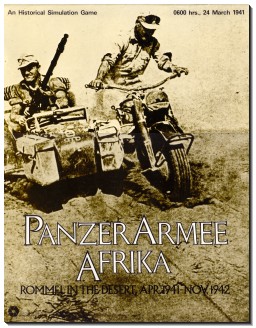
PanzerArmee Afrika, subtitled "Rommel in the Desert, April 1941 - November 1942", is a board wargame published by Simulations Publications, Inc. (SPI) in 1973 that simulates the World War II North African Campaign that pitted the Axis forces commanded by Erwin Rommel against Allied forces. The game was revised and republished in 1984 by Avalon Hill.

Battle of the Bulge is a board wargame published by Avalon Hill (AH) in 1965 that simulates the World War II battle of the same name. General Anthony McAuliffe (ret.), who had been commanding officer at Bastogne during the Battle of the Bulge, was a consultant during the game's development. The game proved popular and sold more than 120,000 copies, but was dogged by criticisms of historical inaccuracies, and was finally replaced by a completely new edition in 1981. A third edition in 1991 was released as part of the Smithsonian American History Series.

Panzergruppe Guderian is a board wargame published by Simulations Publications, Inc. in 1976 that simulates the 1941 Battle of Smolensk during World War II.
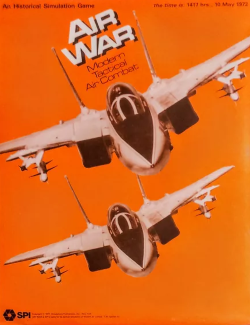
Air War, subtitled "Modern Tactical Air Combat", is a board wargame published by Simulations Publications, Inc. (SPI) in 1977.

Wellington's Victory: Battle of Waterloo – 18 June 1815 is a board wargame simulation of the Battle of Waterloo, originally published by Simulations Publications, Inc. (SPI) in 1976.
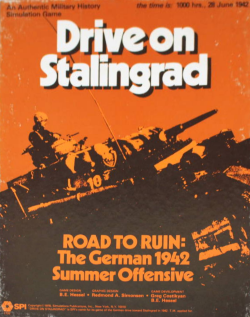
Drive on Stalingrad: Battle for Southern Russia Game is a board wargame originally published by Simulations Publications, Inc. (SPI) in 1977 that simulates Germany's 1942 campaign in Russia during the Second World War.

Battles for the Ardennes is a "quadrigame" — a board wargame that contains four different battles using one set of rules — originally published by Simulations Publications, Inc. (SPI) in 1978 that simulates Second World War battles in the Ardennes Forest region in 1940 and again in 1944.
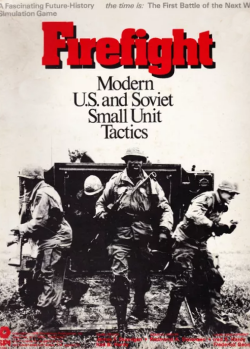
Firefight: Modern U.S. and Soviet Small Unit Tactics is a tactical wargame originally published by Simulations Publications, Inc. (SPI) in 1976 that hypothesizes combat between small units of American and Soviet forces in West Germany in the 1970s.
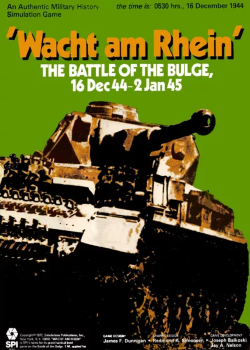
Wacht am Rhein is a grand tactical monster board wargame published by Simulations Publications, Inc. (SPI) in 1977 that simulates Germany's Battle of the Bulge offensive in late 1944 during World War II.

Kursk, subtitled "History's Greatest Tank Battle, July 1943", is a board wargame published by Simulations Publications Inc. (SPI) in 1980 that simulates the 1943 Battle of Kursk during World War II. The game proved popular, reaching the top of SPI's Bestseller list, and was well received by critics.

Patton's 3rd Army, subtitled "The Lorraine Campaign", is a board wargame published by Simulations Publications Inc. (SPI) in 1980 that simulates the Battle of Metz, a portion of the U.S. Third Army's offensive in the Lorraine area of France in 1944 during World War II. It was the first game in SPI's "Victory in the West" series.

Operation Grenade, subtitled "The Battle for the Rhineland 23 Feb. – 5 Mar. '45", is a board wargame published by Simulations Publications Inc. (SPI) that simulates the crossing of the Roer river between Roermond and Düren by the U.S. Ninth Army in February 1945, which marked the beginning of the Allied invasion of Germany. This was the second of three wargames using a common set of rules in the "Victory in the West" series.
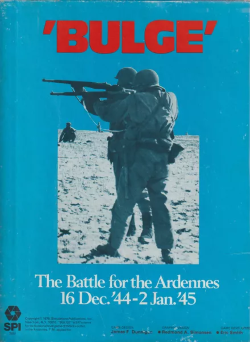
Bulge, subtitled "The Battle for the Ardennes, 16 Dec '44–2 Jan '45", and also published as The Big Red One: The Game of the First Infantry Division at the Battle of the Bulge, is a board wargame published by Simulations Publications Inc. (SPI) in 1980 that simulates the World War II German offensive in December 1944 known as the Battle of the Bulge.

Fulda Gap, subtitled "The First Battle of the Next War", is a board wargame published by Simulations Publications Inc. (SPI) in 1977 that simulates a hypothetical attack by Warsaw Pact forces against NATO defenders in West Germany using technology and tactics of the mid-1970s

The Moscow Campaign, subtitled "Strike and Counterstrike Russia", is a board wargame published by Simulations Publications Inc. (SPI) in 1972 that simulates combat near Moscow during World War II.

Atlantic Wall, subtitled "The Invasion of Europe June 1944", is a board wargame published by Simulations Publications Inc. (SPI) in 1978 that simulates Operation Overlord during World War II, when Allied forces landed on Normandy beaches and attempted to break out into open country.
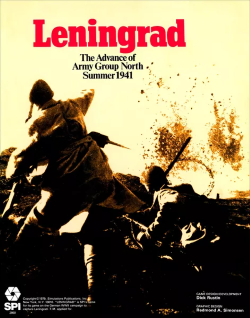
Leningrad: The Advance of Army Group North, Summer 1941 is a board wargame published by Simulations Publications Inc. (SPI) in 1980 that simulates the German drive on Leningrad during Operation Barbarossa in World War II, and the Soviet attempt to prevent a quick German victory. Although the game received good critical reception as a relatively simple game that could be an entry point for new wargamers, it was not a bestseller for SPI.

Modern Battles II: Four Contemporary Conflicts is a collection of four board wargames published by Simulations Publications, Inc. (SPI) in 1977 that simulates three hypothetical contemporary battles as well as the battle for Jerusalem during the Six Day War in 1967. This collection was a sequel to SPI's popular Modern Battles published two years before.

Kharkov: The Soviet Spring Offensive is a board wargame published by Simulations Publications Inc. (SPI) in 1978 that simulates the Second Battle of Kharkov during World War II.
World War II: European Theater of Operations is the title of two related but dissimilar board wargames that simulate the European Theater of World War II. The first was published by Simulations Publications Inc. (SPI) in 1973, and the second by TSR in 1985 following its takeover of SPI.



















